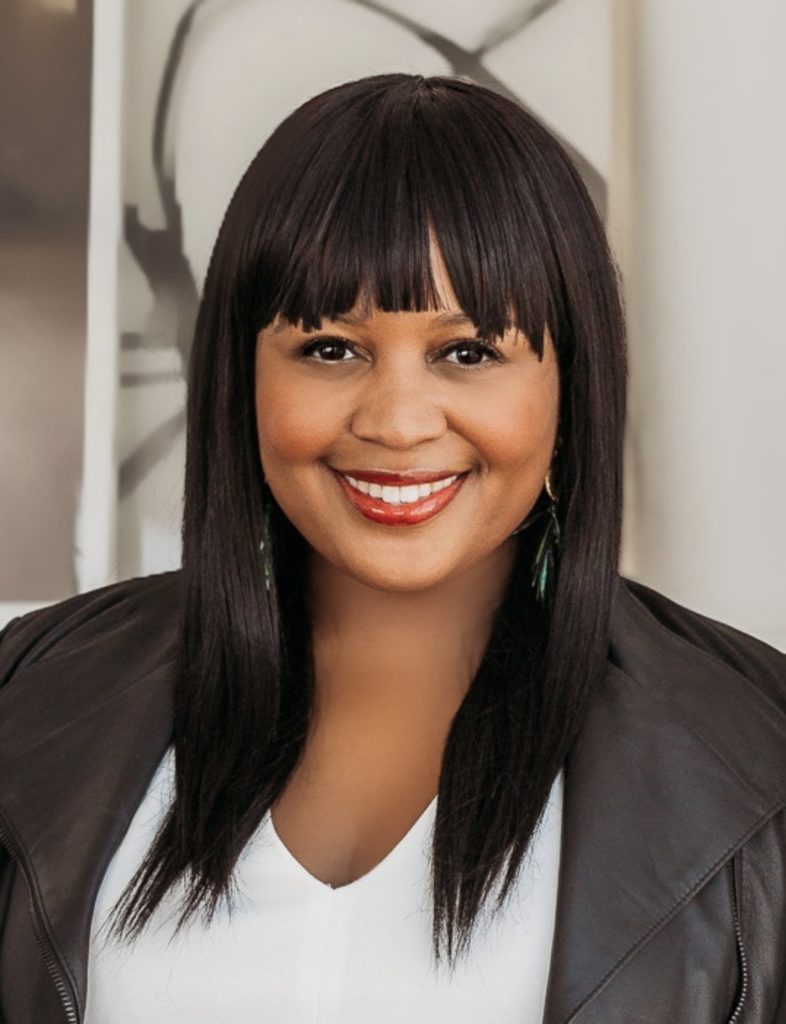
Erica Lynette Edwards wants to change the conversations we have about racism within the dance community and beyond. As a multifaceted artist in Chicago concert dance, Edwards has had a career that includes 15 years as a dancer and five and a half years as the director of community engagement with the Joffrey Ballet. Today, as an advocate for diversity, equity and inclusion (DEI), Edwards is the founder and lead facilitator for Cultivating Better Tomorrows (CBT), supported by her business partners Mauro Villanueva and Kenny Borchard. Together, they represent women, Black and LGBTQ+ artists by leading anti-racism trainings and implementing an online course primarily for dance educators.

What Inspired Edwards to Go Into This DEI Work
Growing up in predominantly white spaces affected how Edwards could bring her authentic self to situations. Over time, she learned how to become adaptable and code-switch her behavior and language. “When I began working in the community-engagement space, it was magical! The majority of the people were BIPOC, including staff members and teaching artists. I felt so good with my people. We had conversations and found comfort in each other. We didn’t have to change how we delivered our message; we could just talk to each other candidly.”
What CBT’s Training Involves
CBT’s name was created and inspired by its first tagline: “Ending the cycle of trauma as tradition.” CBT educates people on how to create welcoming spaces for all. The organization started its work with individuals before moving to service organizations: staff, senior leadership and board members—all referral-based. And the online anti-racism course “Cultural Awareness for Dance Educators” has expanded its reach. The training program focuses on ensuring that dance organizations and dance educators are responsive to diverse students’ needs, a process that involves three parts: defining, creating and sustaining an anti-racist learning environment.
1. Defining: Implementing cultural humility over cultural competency.
CBT discovered that people were saying and using terms without realizing their implications. By going through various words, providing definitions and understanding them, clients can benefit from the shared knowledge that highlights anti-Blackness. In other words, CBT encourages “cultural humility,” as opposed to cultural competency.
Edwards believes that “you will never know all you can about somebody else or their culture, but you can humble yourself and continue learning. It’s also an opportunity to reflect on your own bias, to understand how to change your way of thinking, how to best support people.”
2. Creating: Questioning what’s happening in your workplace.
Ask yourself: What are some of the structural inequities in place at your school, studio or dance space? What’s the culture of your organization? Does there need to be a culture shift? What actions can you take, moving forward?
By using Zoom breakout rooms, participants are challenged to recognize and define what these questions look like in their organization. With group agreements in place, Edwards shares her personal experiences, then questions any thoughts or alternate perspectives that may come up.
3. Sustain: Integrating your anti-racist lens into your daily activities.
To conclude the training, participants practice various scenarios of what personal accountability means to them.
Edwards says that her most challenging experience while being involved in this DEI work is when some people don’t understand her personal experiences and the reality that there is racism, which becomes disheartening.
Here, Edwards shares more insights on the challenges and rewards that come with being involved with DEI work in the dance education space.
What does being anti-racist mean to you?
“[Social change agent] Gail Christopher once said that racism is rooted in a false belief in a human hierarchy. Unfortunately, calling someone ‘anti-racist’ could be controversial. And as a Black woman, in the U.S., who is also a descendent of those who were enslaved and not thought of as human beings, anti-racist training is about doing work of humanity. It’s work that should be done as the bare minimum—it’s how we treat people, as people.”
What are some issues you’ve encountered in the dance-education space particularly?
“The main issue is that people think that they’re further along in their DEI journey than they actually are. Many are sitting in positivity instead of recognizing reality, assuming that positivity would reflect DEI ideologies and strategies. And so the training programs ensure that everyone is on the same page.”
What’s the most fulfilling part of being involved in DEI work?
“Transformation. It may not be immediate but later on—clients become open to new perspectives, and that’s the exhilarating part.”
What impact do you see these anti-racist training programs making in the real world?
“It offers a space for people to talk things out or take things in. People take things in their own ways. And it’s powerful to see the progression from the beginning to end; to see their change in participation and or awareness.”
What do you envision for the future of CBT and the dance-education world as a whole?
“I want people to know that CBT exists as a resource and wants to see the dance world change. The main vision is to not be needed, because everyone has the resources that they need. I also hope that the dance world becomes a space where everyone feels welcomed, where they can flourish.”





